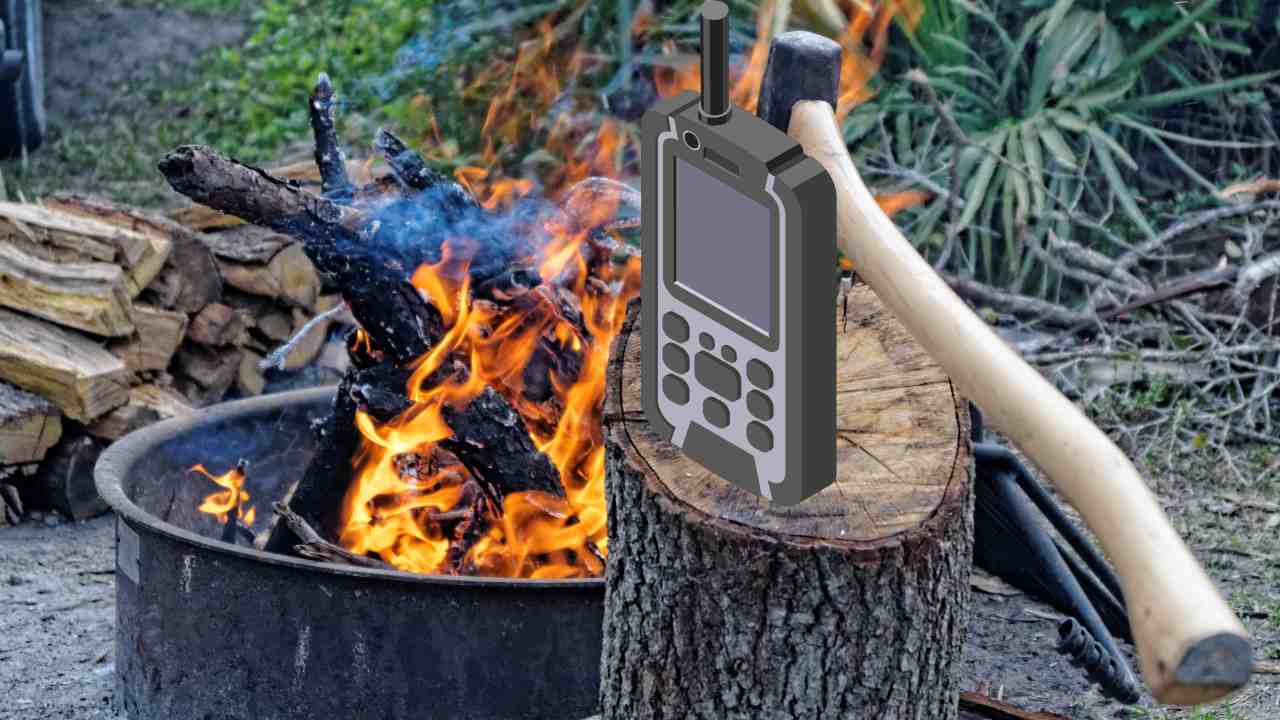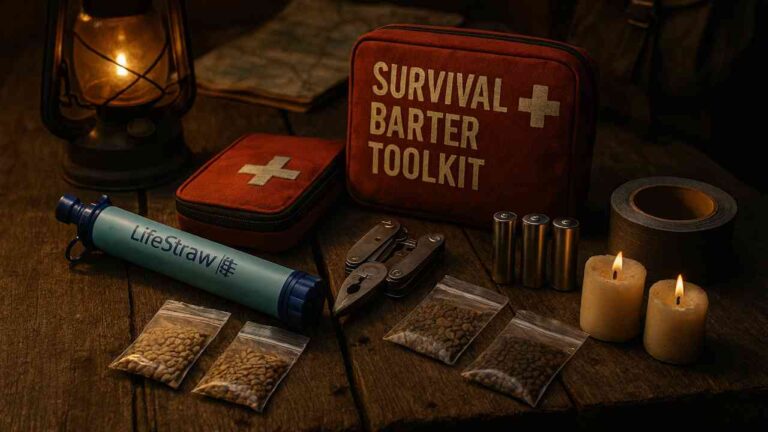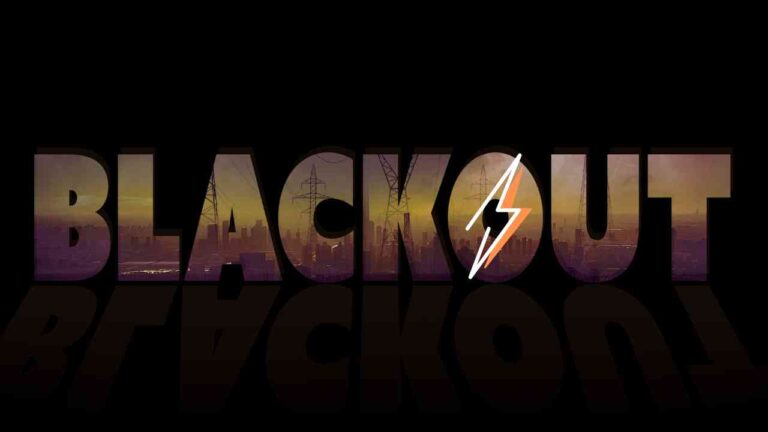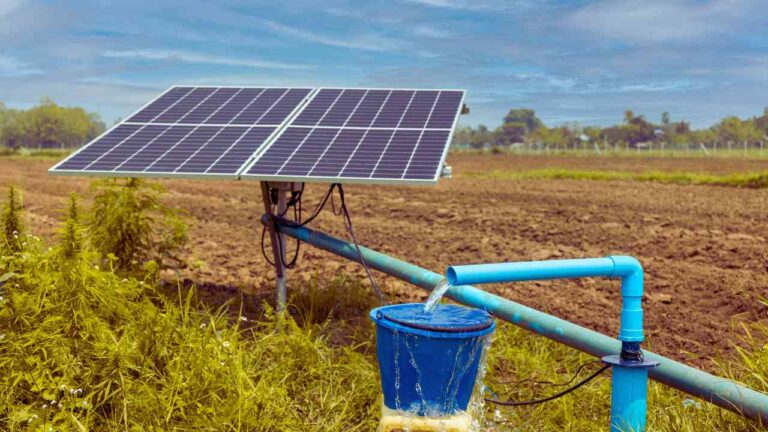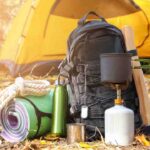Key Takeaways
- Survival communication devices are essential for staying connected during emergencies.
- Choose devices based on your location, budget, and needs.
- Always test and maintain your devices to ensure they work when needed.
- Features like GPS, weather alerts, and long battery life can be lifesaving.
- Don’t rely solely on cell phones—invest in reliable communication tools.
Introduction
Did you know that 88% of Americans believe being prepared for emergencies is important, yet only 16% feel fully equipped to handle a disaster? In a crisis, communication can mean the difference between life and death. Whether it’s a natural disaster, a power outage, or a remote adventure gone wrong, having the right survival communication devices ensures you can call for help, stay informed, and protect your loved ones.
Consider this: during Hurricane Katrina, over 1,000 communication towers were knocked out, leaving thousands stranded without a way to call for help. Similarly, in 2022, 40% of emergency calls failed during a major storm in the Midwest due to overloaded networks. These statistics highlight the critical need for reliable communication tools that work when traditional methods fail.
From satellite messengers to two-way radios, survival communication devices are designed to keep you connected in the most challenging conditions. In this guide, we’ll explore the top tools, how they work, and why they’re essential for every household. Let’s dive in and ensure you’re never left in the dark!
What Are Survival Communication Devices?
Survival communication devices are specialized tools designed to help you send and receive messages during emergencies when traditional communication methods fail. These devices include everything from two-way radios to satellite messengers, ensuring you can stay connected even in the most challenging conditions.
For example, during the 2021 Texas winter storm, millions were left without power and cell service for days, making it nearly impossible to call for help or check on loved ones. Devices like the Garmin inReach Mini 2 or Midland two-way radios proved invaluable, allowing users to send SOS signals and stay informed.
Whether you’re facing a natural disaster, venturing into remote areas, or preparing for unexpected emergencies, these tools provide a lifeline when you need it most. By leveraging technologies like satellite networks, mesh systems, and emergency beacons, survival communication devices ensure you’re never truly cut off from the world.
Why You Need Survival Communication Devices
- Power Outages: Storms and natural disasters often knock out power and cell towers, leaving you stranded without a way to call for help. Survival communication devices, like satellite messengers, operate independently of local infrastructure, ensuring you can reach emergency services even when the grid goes down.
- Remote Areas: Hiking, camping, or traveling in areas with no cell service can be risky. Devices like two-way radios or GPS-enabled messengers allow you to stay connected with your group or send distress signals if you’re lost or injured far from civilization.
- Emergency Alerts: Receiving real-time updates about weather or other dangers can be lifesaving. Many survival communication devices come with built-in weather alerts, keeping you informed about severe conditions like hurricanes, tornadoes, or wildfires, so you can act quickly.
- Peace of Mind: Knowing you can call for help if needed provides invaluable reassurance. Whether you’re preparing for a disaster or exploring the wilderness, having a reliable communication tool ensures you’re never truly alone in an emergency.
Top 5 Survival Communication Devices
Here’s a quick overview of the best devices to consider:-
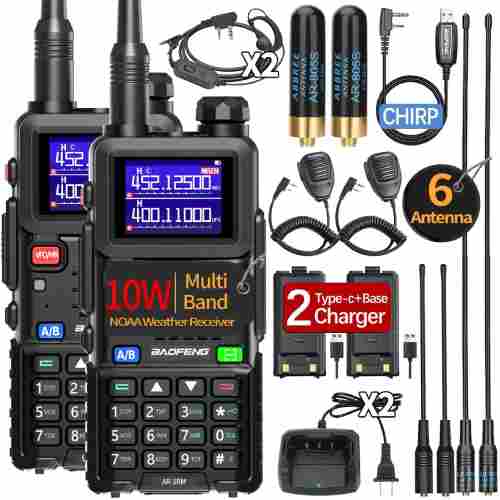
1. BAOFENG 5RM Ham Radio
The BAOFENG 5RM Ham Radio is a 10W long-range handheld radio with 999 channels, a 1.77-inch color screen, and NOAA weather receiver. It includes USB-C charging, 2500mAh batteries, a programming cable, and a speaker mic. Dual charging options and easy frequency copying enhance usability. Rated 4.5/5 stars from 462 reviews.
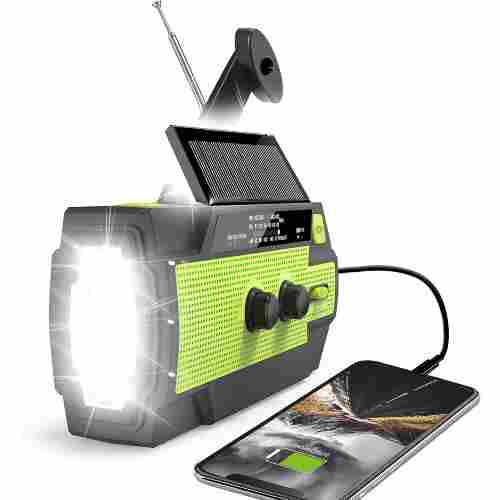
2. Emergency Crank Weather Radio
The RunningSnail Emergency Crank Weather Radio (rated 4.6/5 ⭐ from 15,024 reviews) is a versatile survival tool with AM/FM/NOAA bands, a 4000mAh battery, solar/hand-crank charging, and a 3-mode flashlight with a motion sensor reading lamp. It ensures reliable power and weather alerts during emergencies like hurricanes and tornadoes. Price: $28.72 (20% off).
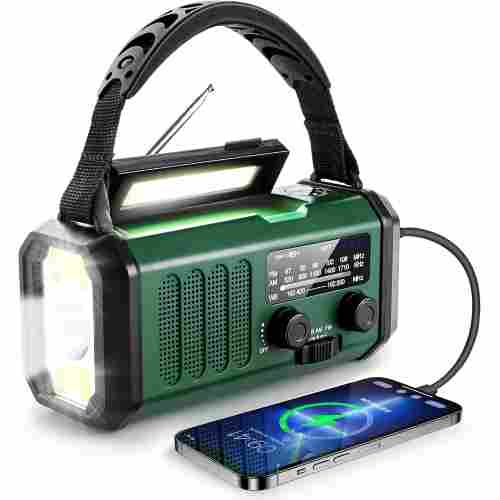
3. 10000mAh Crank Emergency Radio
The Leaton 10000mAh Crank Emergency Radio (⭐4.5/5, 3,344 ratings) is a compact, waterproof survival tool featuring AM/FM/NOAA radio, USB Type-C charging, a hand crank, solar charging, a 48-LED reading lamp, a 20-LED flashlight, an SOS alarm, and a built-in compass. It ensures reliable power and communication in emergencies.
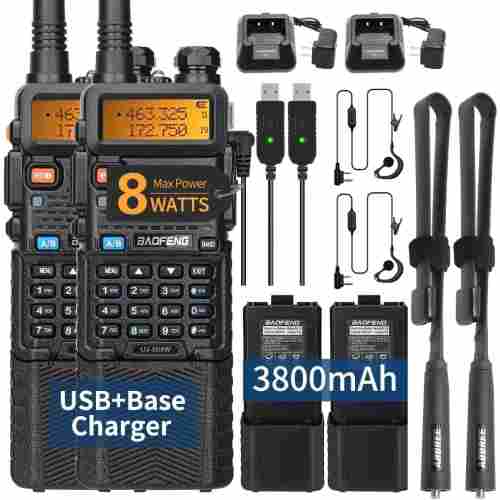
4. Baofeng UV-5R Ham Emergency Radio
The Baofeng UV-5R Ham Radio (4.6⭐ from 1,827 ratings) is a long-range, dual-band two-way radio with 128 channels and emergency alarm features. It supports CHIRP and keypad programming and is ideal for survival, camping, hiking, and patrol use. The full kit includes two radios, antennas, batteries, chargers, and earpieces.
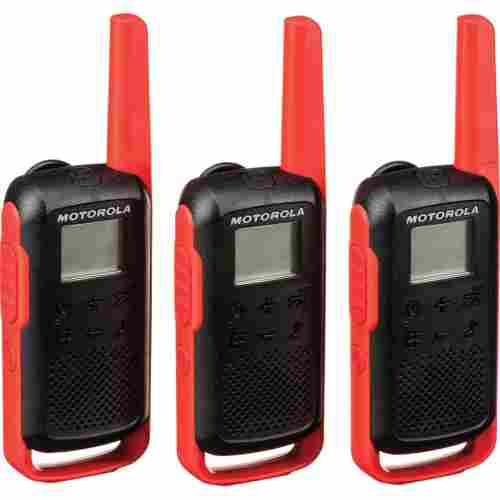
5. Motorola Portable FRS Two-Way Radios
The Motorola Solutions Talkabout T210TP is a 3-pack of FRS two-way radios with 22 channels, 121 privacy codes, and a 20-mile range (varies by terrain). It features NOAA weather alerts, dual power options, USB charging, and an LCD display. Rated 4.3/5⭐ (1,805 reviews), it’s a reliable choice for communication. Price: $84.64 (6% off).
How Do Survival Communication Devices Work?
These devices use various technologies to ensure connectivity:
- Satellite Communication: Devices like the Garmin inReach use satellites to send messages globally, making them perfect for remote areas where cell service is nonexistent. They provide reliable communication even in the most isolated locations.
- Two-Way Radios: Ideal for short-range communication, especially in groups, two-way radios operate on specific frequencies. They’re great for coordinating with family or team members during emergencies or outdoor adventures.
- Mesh Networks: Tools like GoTenna create local networks without relying on cell towers. They allow peer-to-peer communication, making them useful in urban or off-grid areas where traditional networks fail.
- Emergency Beacons: Devices like the ACR ResQLink send distress signals to rescue services via satellite. They’re designed for life-threatening situations, ensuring help is on the way even in the most dire circumstances.
Key Features to Look for in Devices
When choosing a device, consider these features:
- Battery Life: Look for devices with long-lasting batteries or solar charging options. In emergencies, extended battery life ensures you stay connected when power sources are unavailable.
- Durability: Opt for waterproof, shockproof, and weather-resistant designs. These features ensure your device can withstand harsh conditions, whether you’re in a storm or a rugged outdoor environment.
- Ease of Use: Choose devices with simple interfaces and intuitive controls. In high-stress situations, quick and easy operation can save critical time and effort.
- Range: Consider the device’s transmission range. For remote areas, satellite-based devices are ideal, while two-way radios work well for shorter distances in group settings.
- Additional Functions: Features like GPS, weather alerts, and SOS capabilities add extra layers of safety. These tools help you navigate, stay informed, and call for help when needed.
Types of Survival Communication Devices
- Two-Way Radios: Two-way radios are perfect for group communication in emergencies. They’re affordable, easy to use, and don’t rely on cell networks, making them ideal for families, hikers, or teams coordinating during disasters or outdoor adventures.
- Satellite Messengers: These devices use satellites to send messages and SOS signals globally. They’re ideal for remote areas where cell service is unavailable, ensuring you can stay connected and call for help no matter where you are.
- Emergency Beacons: Emergency beacons are designed for life-threatening situations. They send distress signals to rescue services via satellite, providing a direct lifeline to emergency responders when every second counts.
- Mesh Network Devices: Mesh devices create local networks, allowing communication without cell towers. They’re perfect for urban or off-grid areas, enabling peer-to-peer messaging even when traditional networks are down.
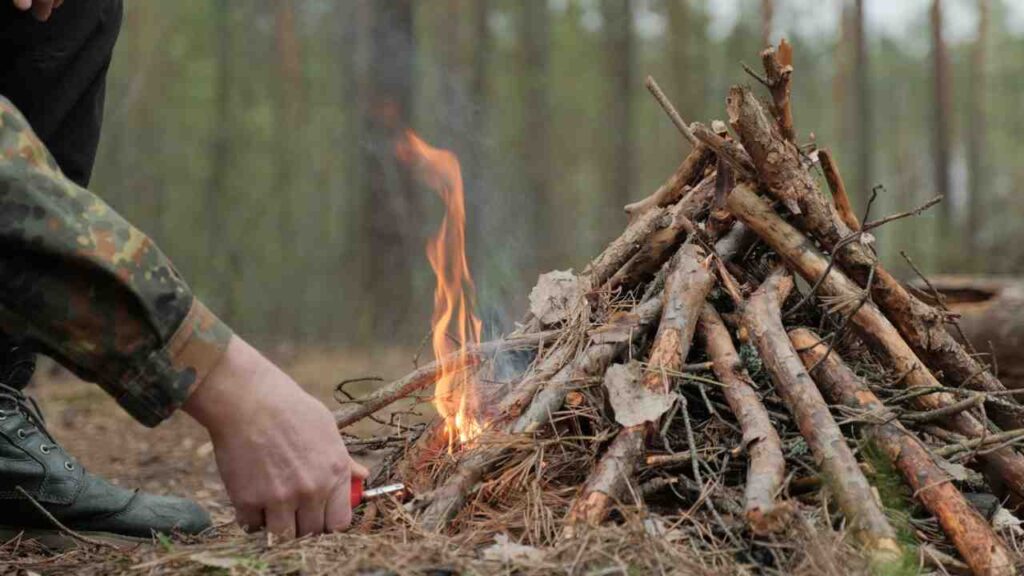
Table: Types of Survival Communication Devices
| Device Type | Best Use Case | Range | Pros | Cons |
| Two-Way Radios | Group communication | 1-36 miles | Affordable, easy to use | Limited range, no global coverage |
| Satellite Messengers | Remote areas, global use | Global | Works anywhere, SOS capabilities | Expensive, requires subscription |
| Emergency Beacons | Life-threatening emergencies | Global | Direct link to rescue services | No two-way communication |
| Mesh Network Devices | Urban/off-grid areas | Up to 4 miles | No cell towers needed, peer-to-peer | Limited range, requires other users |
5 Essential Tips for Using Devices
- Test Regularly: Ensure your device works before an emergency. Regular testing helps you identify any issues, familiarize yourself with its functions, and confirm it’s ready when you need it most.
- Keep It Charged: Always have backup power sources. Carry portable chargers, extra batteries, or solar panels to ensure your device stays operational during prolonged emergencies or off-grid adventures.
- Learn the Basics: Know how to send SOS signals and messages. Practice using the device’s key features so you can act quickly and confidently in high-stress situations.
- Store Properly: Protect your device from extreme temperatures. Store it in a dry, temperature-controlled environment to prevent damage and ensure it functions reliably when needed.
- Share Information: Teach your family how to use the device. Ensure everyone knows how to operate it, send messages, and call for help, so no one is left unprepared.
Common Mistakes to Avoid
- Relying Solely on Cell Phones: Cell towers often fail during disasters due to power outages or network overloads. Always have a backup communication device like a satellite messenger or two-way radio.
- Ignoring Battery Life: Always have a backup power source, such as portable chargers or extra batteries. In emergencies, extended battery life ensures your device remains operational when you need it most.
- Not Practicing: Familiarize yourself with the device before an emergency. Regular practice ensures you can use it confidently and effectively during high-stress situations, saving critical time and effort.
